GamesRadar+ Verdict
XPG's Lancer RGB DDR5 RAM is up there with the top memory kits on the market, especially when it comes to overclocking. Its design is stunning, and the bright RGB array on each module's top will look lovely in whatever rig you install it in. Although its main problem is stability when taken up beyond its quoted on-the-box speed, it's still a worthy competitor that should be on your radar if you plan to overclock.
Pros
- +
Beautiful RGB lighting
- +
Keeps up with other DDR5 top dogs
- +
Great for overclocking
Cons
- -
You can get faster timings and lower voltages for cheaper
- -
Stability could be better
Why you can trust GamesRadar+
The red, glossy box of XPG's Lancer RGB DDR5 RAM certainly sets the scene for it. The front is emblazoned with Mera, an anime character that I understand is XPG's mascot. Her hair looks just windswept enough to tell us she's been in the wars, but she maintains a layer of heroic grace as she secures one of her gauntlets down. She looks out at us, seeming more than ready to take on whatever's about to get in her way. This is all quite fitting because, in the world of the best RAM for gaming, there sure is a lot of competition for this flashy red packaging to stand out from.
XPG, which is one of ADATA's memory brands, has definitely come out to throw hands with this DDR5 kit, and although it might not have knocked our current favorite off the top spot, it definitely makes a good showing of itself against some of the biggest names. Whether you're building yourself a new rig, or you're looking to upgrade one of the best gaming PCs, XPG's Lancer RGB DDR5 packs a decent gaming punch.
The 7200MT/s that's quoted on the box here translates to 5200MHz. I've tested two 16GB sticks for this review, which I'm seeing available for $140 in the US, and circa £160 in the UK. This puts XPG's DDR5 in that middle price region of the kits we've tested and although you can find cheaper, I wouldn't say this is overpriced.
Design
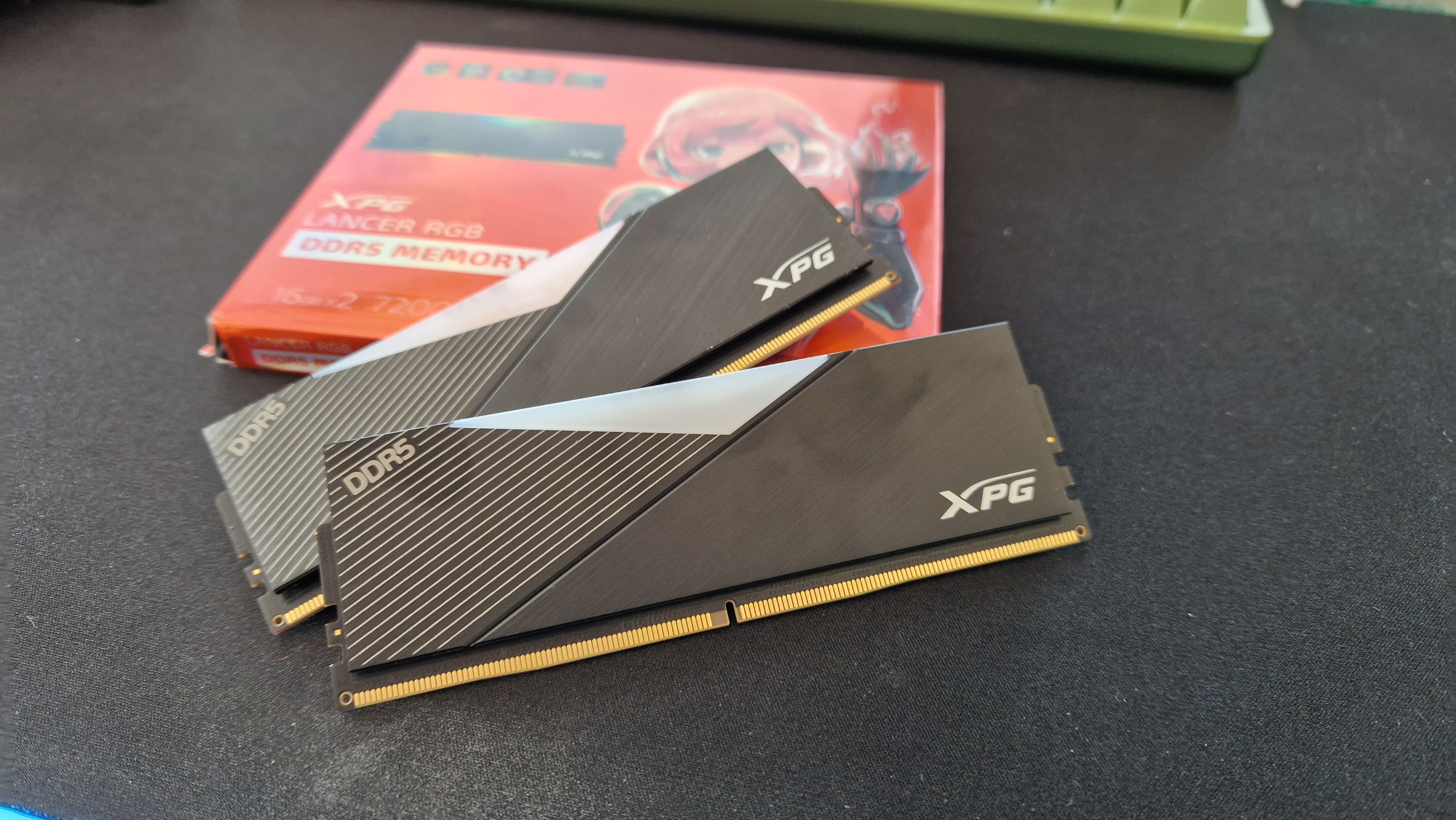
As its title may suggest, XPG's Lancer RGB DDR5 has a beautiful lighting array on its top. Like seemingly all DDR5 RAM these days, the body of each stick has some diagonal linework through it, and while its RGB strip does span the length of each stick, it bulks out a bit in the middle, thanks to its integration into these diagonal lines.
The RGB shines super brightly, as you'll be able to see from the images I took. I'd say it looks just as good as the Klevv Cras XR5 RGB DDR5, and arguably shines brighter. It certainly gave my S22+'s dark photography a run for its money when taking review photos. XPG has ensured compatibility with plenty of software here, and you can customize lighting it to your liking with ASUS Aura Sync, Gigabyte RGB Fusion, MSI Mystic Light Sync, and AS Rock's Polychrome equivalent.
From what I can see, these kits are available in both black and white, in varying speeds in the US, and both color models have those diagonal accents, DDR5 branding on one corner, and XPG's logo on the opposite corner.
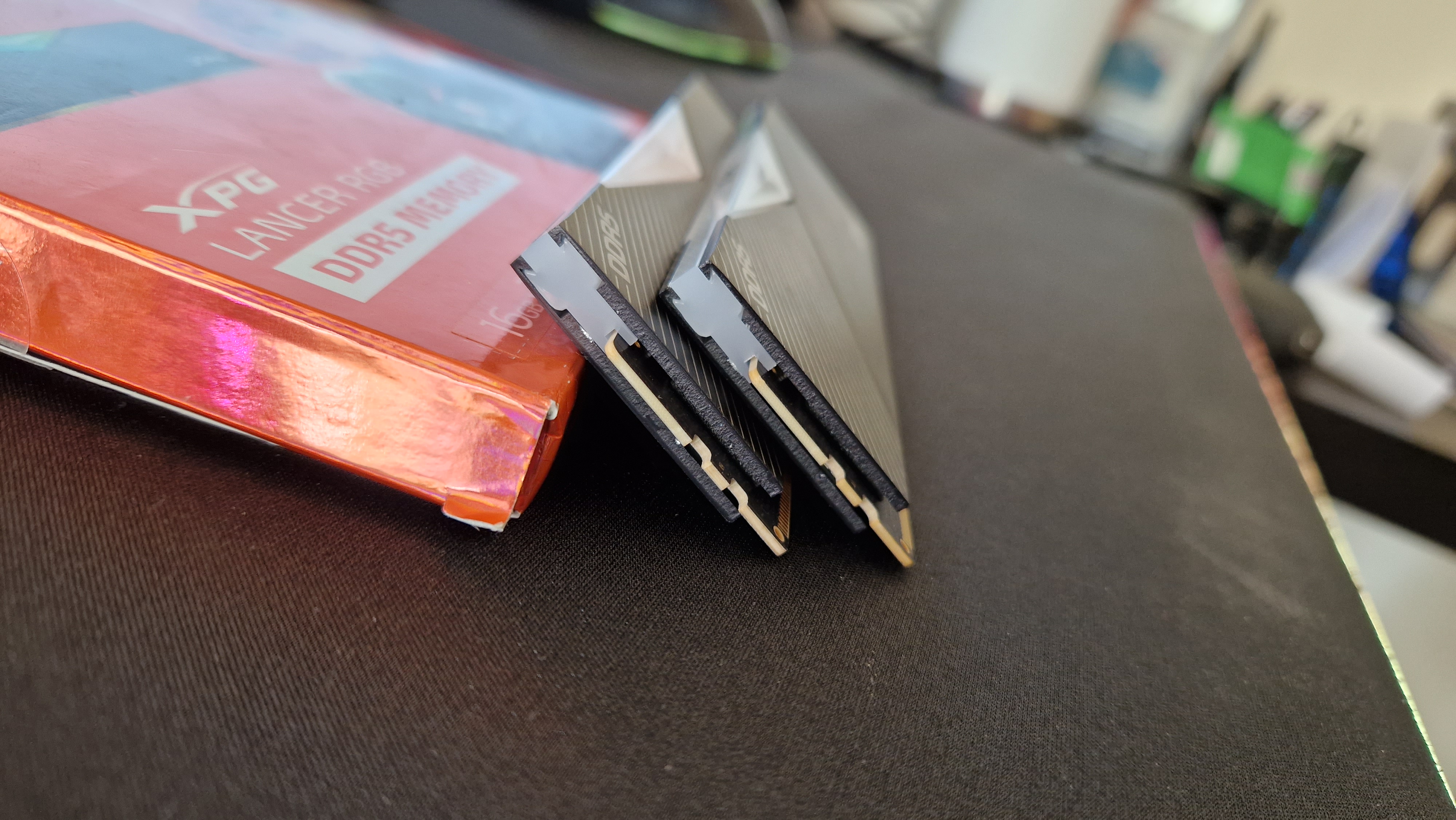
What I do like about the physical design of this RAM, is how substantial it is. I think a lot of brands like to make their DDR5 sticks as thin as possible to cater to as many PC gamers as they can - Sabrent's Rocket DDR5 was certainly easier to fit in my ITX (small form factor) build than others might have been. But XPG's kit feels more sturdy, and it's a lot easier to grip and install than some of the other modules I've gone hands-on with as a result of its thicker mid-section.
I also admire that there's a bit of lettering on the top of the lighting array. I review RAM, and frequently have to remove and seat new modules. I still get confused sometimes as to which way up certain models should go, because a lot of the time their design never makes it very clear which way round is correct. For buyers that are even less confident, having a frame of reference on the top of a module is really helpful, especially since forcing memory in the wrong way can damage not only the RAM, but the motherboard too. This is a small thing, but I think it's worthy of praise.
As a reference though, if you aren't sure, I usually find any branding on RAM should face right/turn away from your other components when installed on a motherboard.
Features
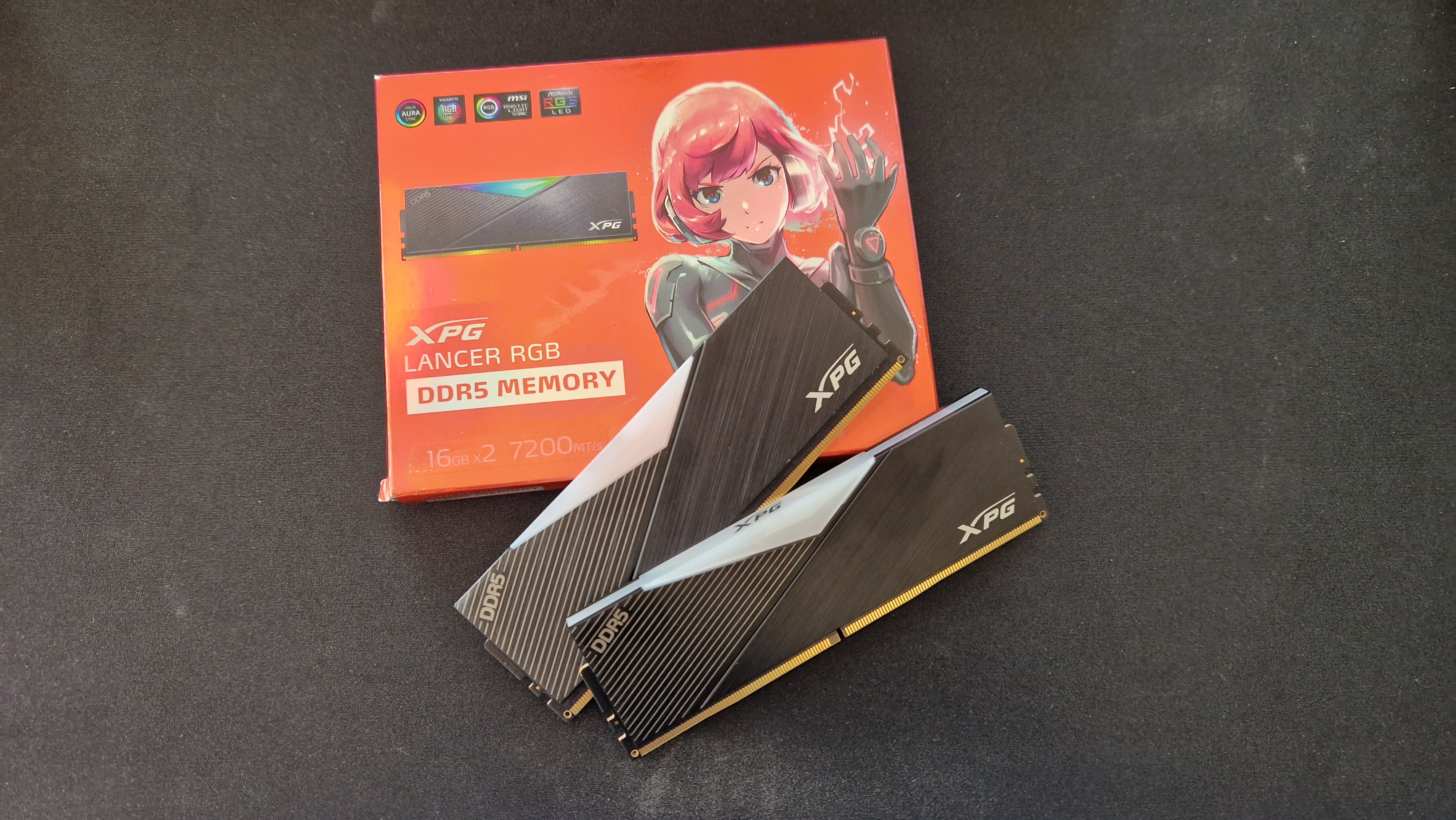
Onto features, then. As you might guess, this is DDR5-compatible RAM that has an on-the-box speed listing of 5200MHz. Like any DDR5 kit, it supports XMP and AMD Expo, and if you don't know what XMP is, and how you can enable it, please check out our handy guide I made.
The speeds on the packaging may be a tad confusing for some, since most RAM marketing uses the metric of MHz, and XPG has listed 7200MT/s on its packaging. MHz is the number of million cycles per second, and it denotes the speed at which data moves between components - like from one of the best CPUs for gaming and your RAM.
MT/s, on the other hand, is arguably a more precise measurement for RAM itself, which is why I imagine XPG has put it front and center here. I do want to be clear to anyone who hasn't come across this before - MT/s and MHz are not the same, and the numbers are not a 1:1 translation. MT/s refers to the number of million transfers per second RAM can complete.
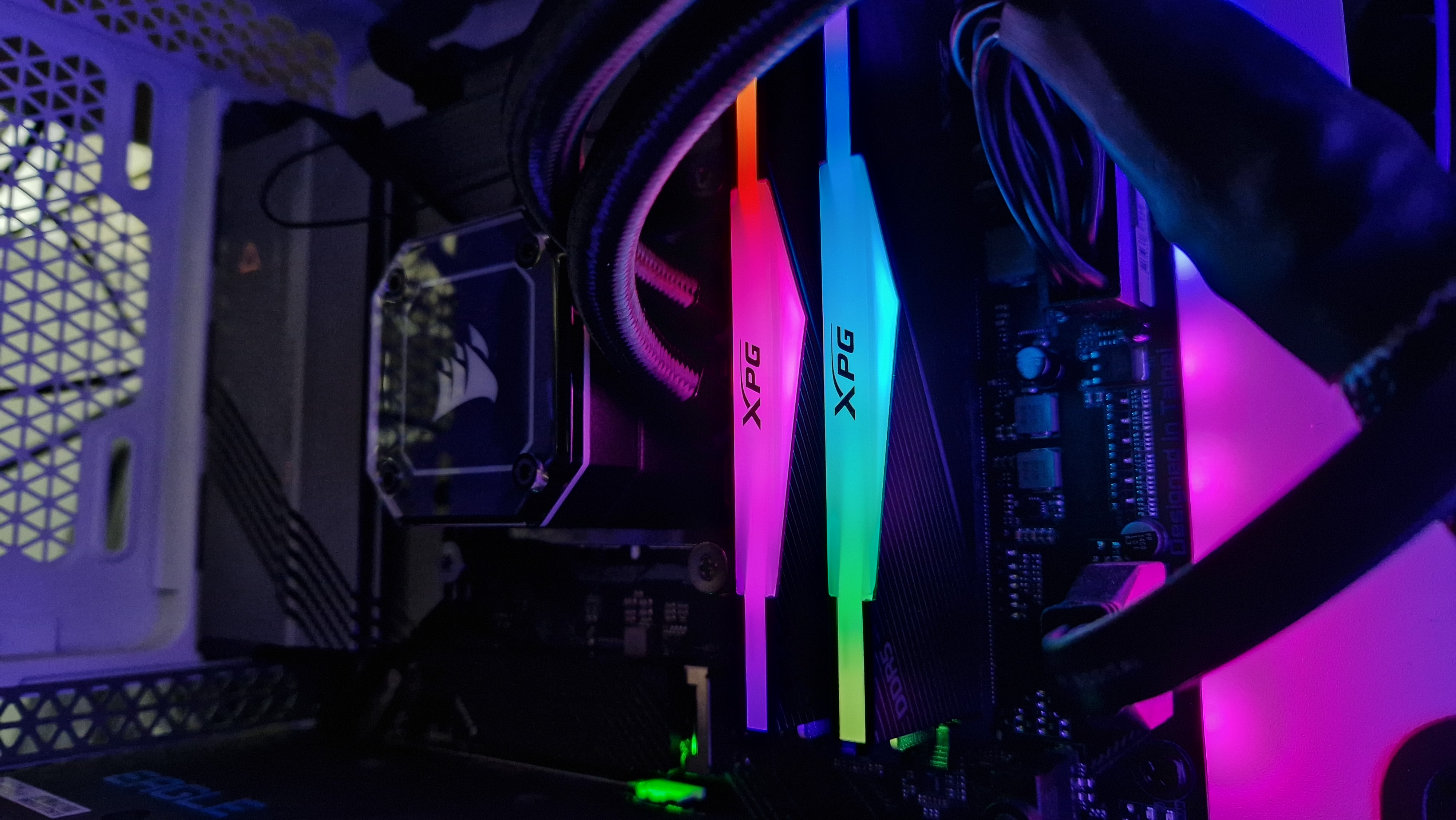
So, while this RAM is capable of 7200MT/s, its on-the-box speed converts to around 5200MHz, all told. When playing around in the BIOS of our testing PC, I found one XMP profile and one AMD EXPO profile on these modules, which, isn't my favorite. I'd prefer more profiles so people can play around without getting into the nitty gritty of creating custom RAM profiles, but as I test out more and more memory, one catch-all profile seems to be the standard.
XPG Lancer RGB DDR5 features built-in power management (PMIC) which XPG says makes the modules more stable power-wise and gives them more power efficiency than DDR4 thanks to lower operating voltages. As we'll see when we come to performance, I'm not entirely convinced by this, but it's always good to know power management and stability have directed thinking with DDR5 design.
There's also on-die error correcting code (ECC) as we see with plenty of other DDR5 kits, and high-quality ICs and PCB materials supposedly give this RAM more reliability when overclocking - I presume because they handle heat better. This is certainly something I can attest to since XPG's kit never felt warm to the touch after testing.
Performance
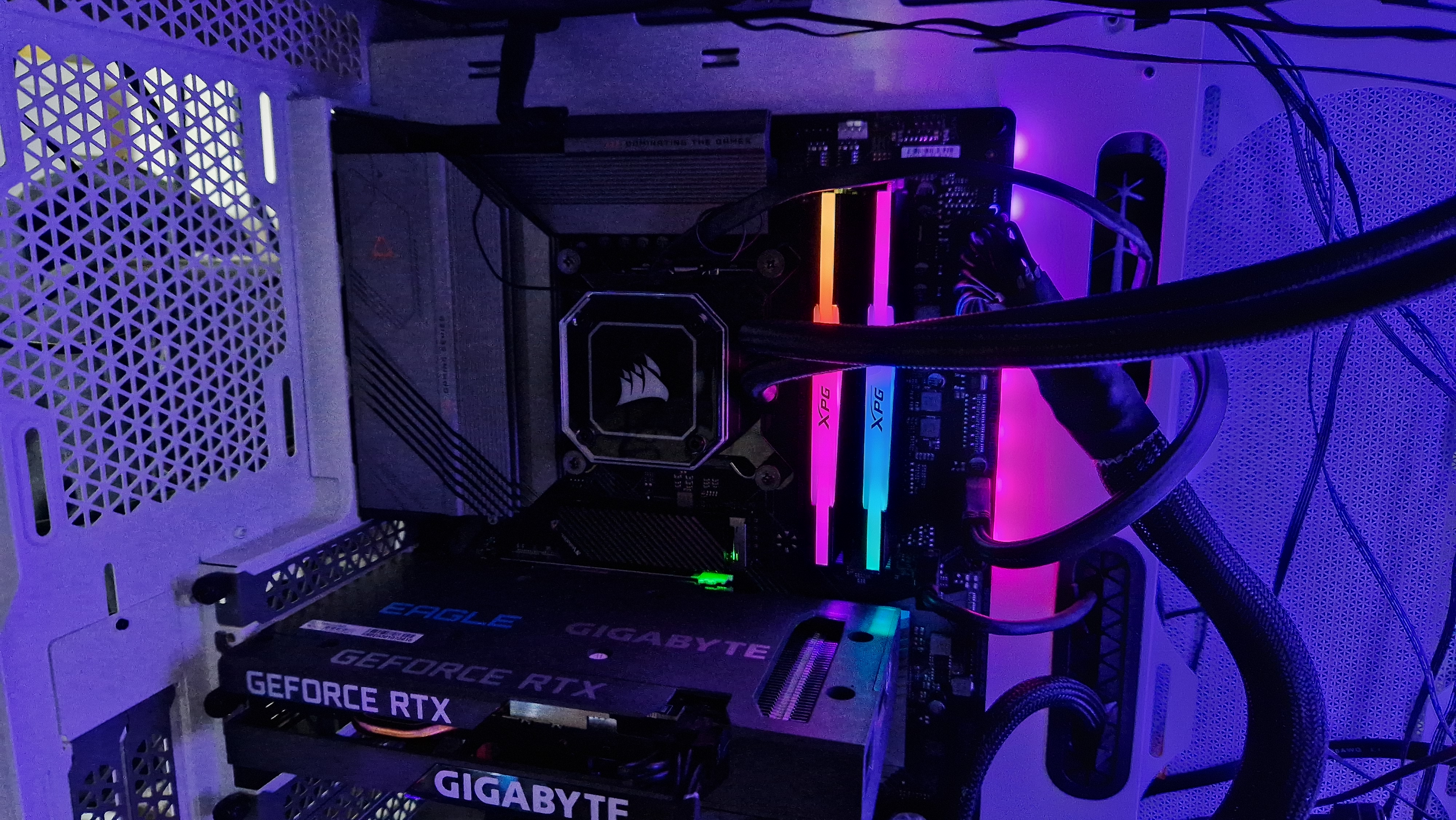
Straight out of the gate, I'll say that this RAM is a top performer. Given that MHz rate I mentioned of 5200, I'd say it's similar to Sabrent's Rocket DDR5 in that for overclocking, this is super viable. Since testing PNY's XLR8 MAKO DDR5, I've been clocking RAM up to the 6000MHz mark since we now have the Intel Core i7-13700K to utilize higher speeds in our testing rig. All the speeds and numbers you'll see in this performance section are taken at that speed, so keep that in mind as you read on that if you run it closer to that speed in your rig, you may get more stable results. I only did this because I wanted to compare it to other kits working at 6000MHz.
As usual, when I do these RAM reviews, I combine DDR5 with an entry-level GPU, and play around with how working at varying clock speeds will impact performance. I test with XMP enabled and without to see the performance boost that can be obtained, and I play three benchmarking games on an RTX 3050 to see how these differing memory modules and MHz rates can impact frame rates. I also keep an eye on the percentage of the RAM that's being used.
As ever, I'll mention that while frame rates aren't typically the measure of how hard RAM is working, I've found in testing that DDR5, thanks to its new-found speed over DDR4, can produce frame rate boosts, especially when testing at varying speeds. These aren't always massive gains, typically anywhere between 15 and 20 with and without XMP being enabled - but this is an easily recognizable quantifier for how RAM squares off against one another without getting into nitty-gritty tech terms that you may not understand.
Here's how the XPG RGB kit compared to our current top RAM for gaming pick, also running at 6000MHz.
| Row 0 - Cell 0 | XPG Lancer RGB DDR5 1080p | Klevv Cras XR5 1080p | XPG Lancer RGB DDR5 1440p | Klevv Cras XR5 1440p |
| Apex Legends | 155fps | 155fps | 117fps | 115fps |
| Control | 83fps | 100fps | 50fps | 95fps |
| HUNT: Showdown | 103fps | 90fps | 105fps | 60fps |
This RAM delivered some pretty good performance overall, then, getting us fairly close to those Klevv numbers, despite its quoted speed being significantly less. In Apex Legends, frame rates were a lot more fluctuant with XPG's kit, however - and that isn't all bad news. Sometimes it would reach up to 180fps at 1080p, although this instability wasn't as noticeable in the other two games. In Control and HUNT: Showdown, we had inverse results with the two kits, but on the whole, I will say that performance was noticeably more stable with Klevv's. I think the main takeaway from these tests, was that XPG's is some of the best RAM for overclocking in the DDR5 space. If you're able to find this for a similar price as budget brands, which looks more possible in the US than it does in the UK at the time of writing, you're getting a bit of a bargain.
For the more technical and number-minded buyers, it might pay to know that with two 16GB sticks, Control was only sapping up around 40% of its capability, and in a general use test, working with a heavy tab load didn't make this RAM sweat at all - I'd be surprised if any DDR5 RAM did, but this is always the bare minimum you should be looking for with 32GB of memory.
According to CPU-Z, the timings of XPG's Lancer RAM is 36-36-36-76, which comes in just that bit slower than Klevv's 36-36-36-70. Interestingly though, XPG's numbers are on par with PNY's XLR8 MAKO ones when it was operating at 5000MHz.
When it came to voltages, despite XPG's best efforts with PMIC, XPG's RAM was running at a higher rate than Klevv's, which was previously the highest I'd seen. For the most part, ie, JDECs, 1.10v was standard, but with XMP, these modules were reading at 1.40v. While I hardly think this would cause issues, I would say it reinforced the slight instability I saw during in-game testing when overclocked.
Should you buy XPG Lancer RGB DDR5 RAM?
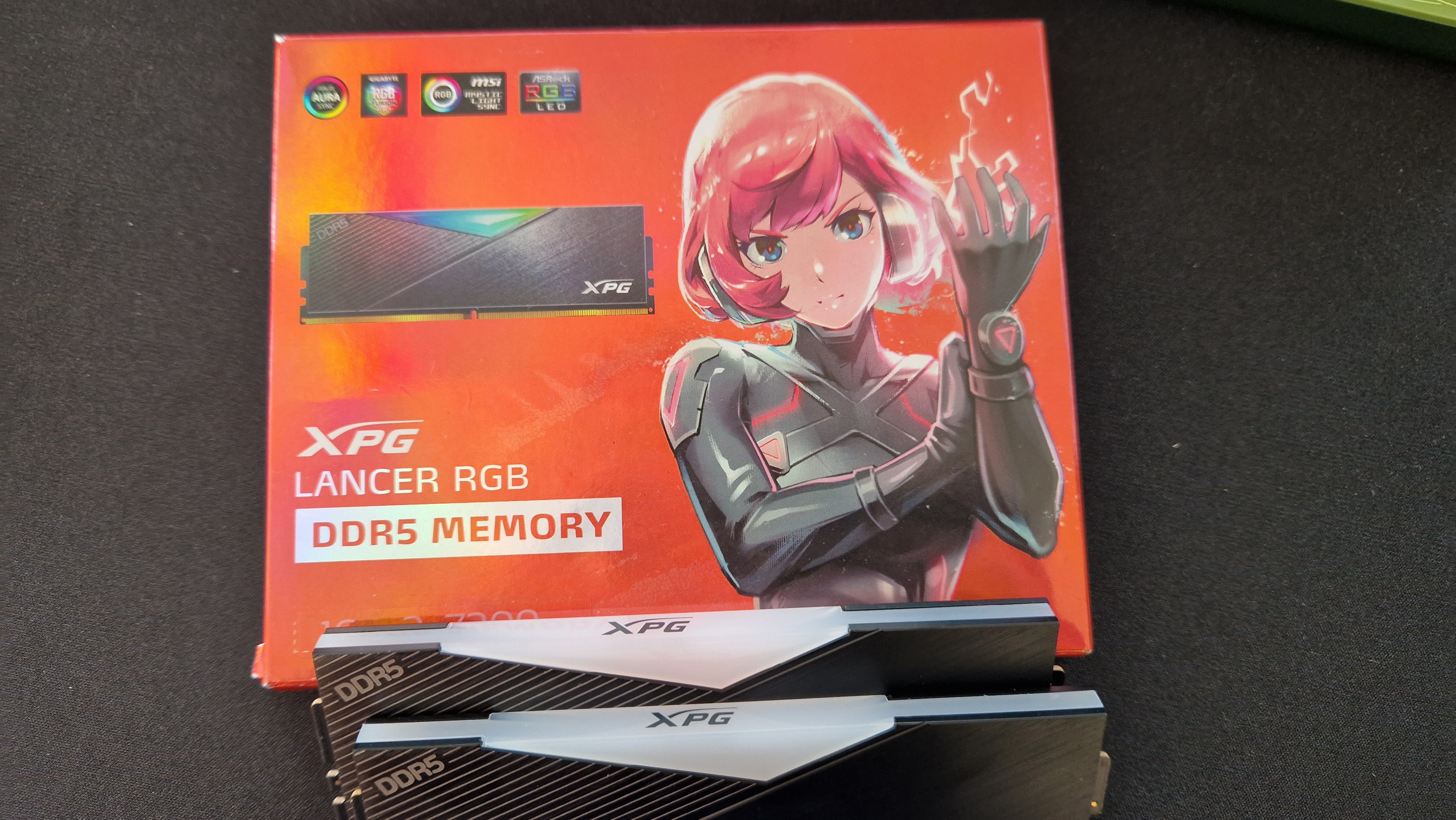
Going back to that image of Mera looking ready for a fight, let's see how she did. XPG's RAM managed to produce some excellent gaming performance at overclocked XMP speeds, at times even keeping up with the very best RAM out there, although these performances were a tad more unstable than a few others that are bred for working at higher speeds.
In the looks department, this RAM blows a lot of competition out of the water, and it isn't short of style at all. While its price isn't as unreasonable as some of the other big-name brands out there, it is possible to find better performance for cheaper.
So, Mera came out swinging in whatever anime battle she was preparing for. She performed some flashy moves while somersaulting and making it all look effortless. She clearly knows she's one of the fan favourite characters, and she isn't afraid to put on a show. But I get the sense she's the prodigy who knows how talented she is, because she put style before efficiency a little, and in the end, the main character was able to defeat the big bad after she tried one flip too many. Ask her to take on a tougher enemy, though, and she'll always be up for a challenge.
Overall, I think this RAM should be on your radar.
How we tested XPG Lancer RGB DDR5 RAM
I put XPG's Lancer RGB DDR5 RAM to the test inside our hardware team's testing PC. I tried out two black 16GB sticks, giving us an equal 32GB of memory to compare other memory we've gone hands-on with to. As well as general work, during which I have many tabs open at any one time, I played around with XMP profiles and RAM clock speeds in the PC's BIOS, keeping an eye on how the RAM felt while working at varying rates.
For gaming, I clocked frame rates and percentages of use while playing three benchmarking games at 1080p and 1440p with an entry-level GPU. While tracking frame rates isn't a typical way to test RAM, I've seen that DDR5 running at faster clock speeds can have an impact on frame rates and their stability, and while these jumps up or down may not be noticeable to an average payer, I believe they're an easy and recognizable way to assess RAM's performance and stability, especially when working with an entry-level GPU and a CPU that can make the most of higher clock speeds. To keep tabs on readings and voltages, I used ZPU-Z.
The rest of our testing rig is made up of an i7-13700K CPU, and Gigabyte Z690 Gaming X motherboard, and PNY M.2 SSD.
To read more about the ways we test the latest gaming accessories and tech here at GamesRadar+, have a look at our hardware policy.
Want more PC buying advice? Take a look at the best Alienware gaming PCs, the best graphics cards, and the best SSDs for gaming.
One of my earliest memories is playing SuperMario64 and wondering why the controller I held had three grips, but I only had two hands. Ever since I've been in love with video games and their technology. After graduating from Edinburgh Napier University with a degree in Journalism, I contributed to the Scottish Games Network and completed an Editorial Internship at Expert Reviews. Over the last decade, I’ve been managing my own YouTube channel about my love of games too. These days, I'm one of the resident hardware nerds at GamesRadar+, and I take the lead on our coverage of gaming PCs, VR, controllers, gaming chairs, and content creation gear. Now, I better stop myself here before I get talking about my favourite games like HUNT: Showdown, Dishonored, and Towerfall Ascension. Location: UK Remote



